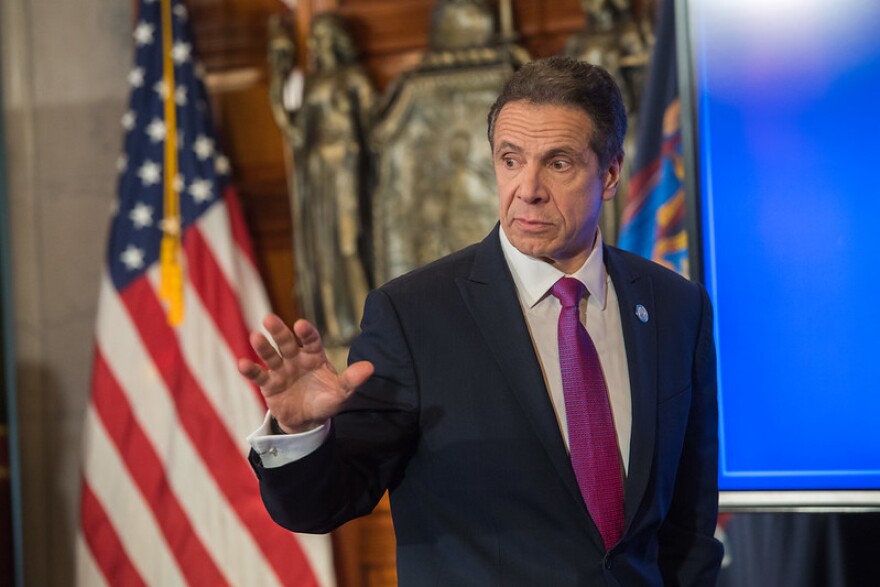The coronavirus infection rate has been creeping up in New York, though it still remains well below the rates in most other states. Governor Andrew Cuomo, is arguing, though, that 20 COVID-19 hotspots in New York should not count against the state’s overall low numbers.
Cuomo, in his daily telephone briefings with reporters, has offered two sets of numbers lately. One is what the virus transmission rate is overall in the state. The other is what the rate would be if 20 areas identified as hotspots were not counted. For instance, on October 13, the rate in the clusters was 6.29% . That brought the statewide average to 1.1%. But without the hotspots, the number of positive cases was 0.95%.
Cuomo said it makes sense to make the distinction, because more testing is done in the clusters.
“You have an oversample of the highest infection rate in the state, the clusters, so it skews the number,” said Cuomo.
The governor said New York is also identifying and reporting the virus clusters more accurately than some other states. He said New York’s health officials have developed a more precisely targeted way to measure transmission, and has the capacity, “to see things that normally you don’t see.”
“We have flare ups because in this state we have a microscope, and the other states don’t have a microscope,” Cuomo said. “If you don’t have a microscope, you don’t see a lot of things.”
The most recent numbers for the virus, released Friday, show the overall statewide rate on Thursday was 1.25%, and the average rate in the hotspots was 4.84%.
Cuomo’s arguments are reminiscent of those of President Trump, who said in September that the nations’ infection rate would be lower, if you did not count the number of cases in Democratic led, or blue states. Trump repeated that claim on the Fox Business channel on October 15.
Trump has also frequently said that with less testing, there would be fewer coronavirus cases reported.
Rich Azzopardi, senior advisor to the governor, said Cuomo is saying the opposite of what Trump is saying. He said Trump advocates for less testing, while the state health department is actually doing more intensified testing, and the rapid tests used in the hot spots are resulting in the higher positive numbers.
Azzopardi said it makes sense to provide “context” and report the hotspot infection rates separately.
The state’s numbers in recent days also show that hospitalizations for the disease are steadily climbing. On October 13, 938 New Yorkers were in the hospital with the virus, the highest rate since June 25. Of the 146 new patients admitted, nearly half were from the 20 hot spots.
On Thursday there were 918 hospitalizations and 143 new admissions.
There are also rising incidents of positive cases in the schools. Many of the state’s more than 700 districts are conducting at least part time in-person learning.
The governor’s framing of the state’s infection rate also comes during a week that he released a memoir that chronicles how he successfully lowered the rate of infection in New York, which in the spring was the nation’s epicenter for the coronavirus.
State Senator Jim Tedisco, a Republican who has been at odds with the governor over nursing home policies during the pandemic, said perhaps the governor was too hasty to write the book, before the crisis is over. Tedisco spoke at a rally protesting the state’s strict visitation rules at nursing homes.
“I think he made a big mistake,” Tedisco said. “We’re still in the midst of this problem.”
The governor agrees that the crisis is far from over. He said he expects “micro cluster” outbreaks of the virus to flare up for at least another year, even after there is a vaccine.


